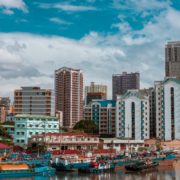
PRESIDENT Rodrigo Duterte has decided to extend the general community quarantine on Metro Manila until June 30, according to presidential spokesperson Harry Roque.
Aside from Metro Manila, several areas in Luzon including Cagayan, Isabela, Nueva Vizcaya, Quirino, Santiago City in Cagayan Valley (Region 2); Aurora, Bataan, Bulacan, Tarlac, Olongapo City in Central Luzon (Regoin 3); Cavite, Laguna, Batangas, Rizal, and Quezon, or the entire Calabarzon Region (Region 4-A), and Occidental Mindoro in Mimaropa (Region 4-B) will remain under GCQ.
In Central Visayas, Bohol, Cebu, Negros Oriental, Siquijor, Mandaue City, and Lau-Lapu City will likewise be under GCQ.
Meanwhile, Davao City and Zamboanga City are the areas in Mindanao that will be under GCQ.
Cebu City, on the other hand, has been placed back under enhanced community quarantine.
“The increasing number of new cases and widespread community transmission in majority of barangays in the city, as well as consistent case doubling time of less than seven days and significant increase in critical care utilization against critical care capacity were the reasons cited why Cebu City reverted back to ECQ,” Roque said.
“The rest of the country remains under modified general community quarantine (MGCQ) until June 30, 2020,” he added.
Roque also said that Metro Manila barely met the requirements to remain under GCQ.
“If I were to be candid, Metro Manila barely made the cut and that’s why we remain under GCQ. We’re looking at a seven-day doubling case rate, meaning it would take seven days before cases of COVID-19 (novel coronavirus) double and [NCR] barely made it to seven days,” he said.
“One thing going for Manila is we have about 30 percent critical care utilization rate, which means we still have about 70 percent capacity in Metro Manila, which explains why the decision was to remain in GCQ,” he added.
Currently, there are 26,781 COVID-19 cases nationwide, including 6,552 recoveries and 1,103 deaths.






